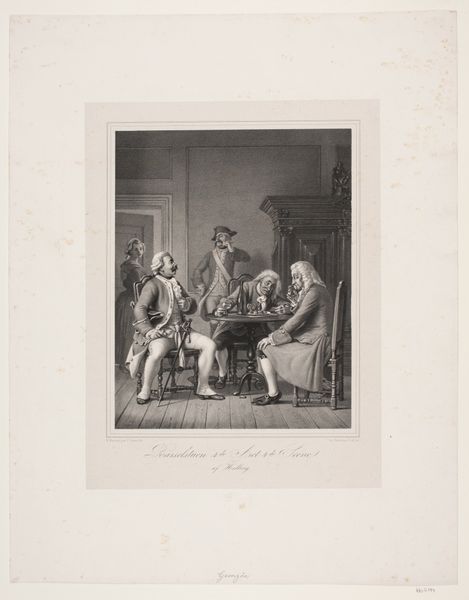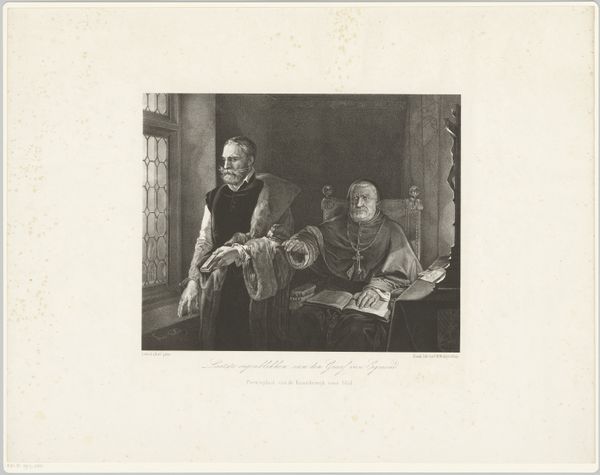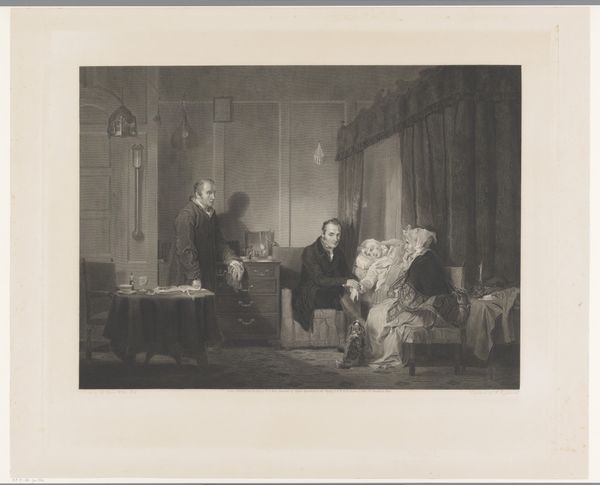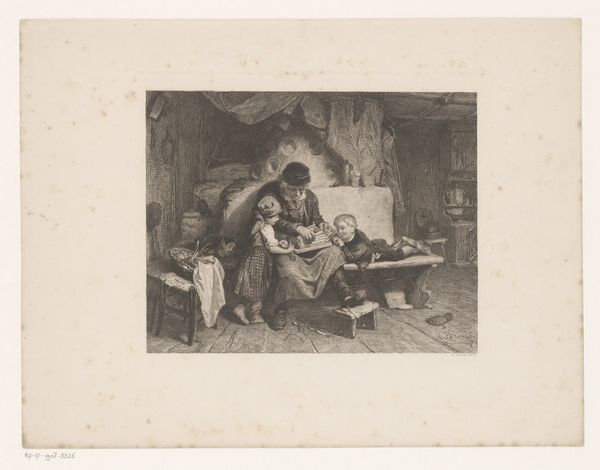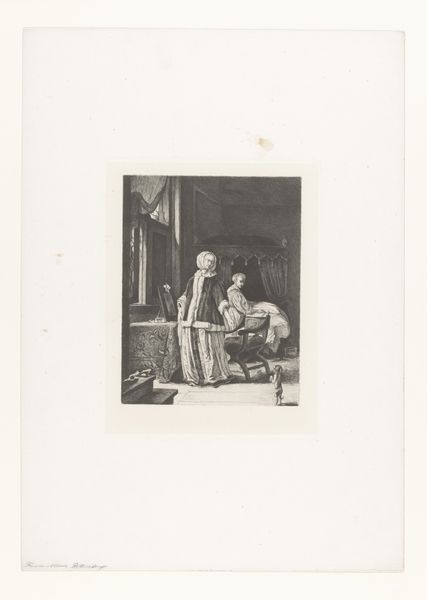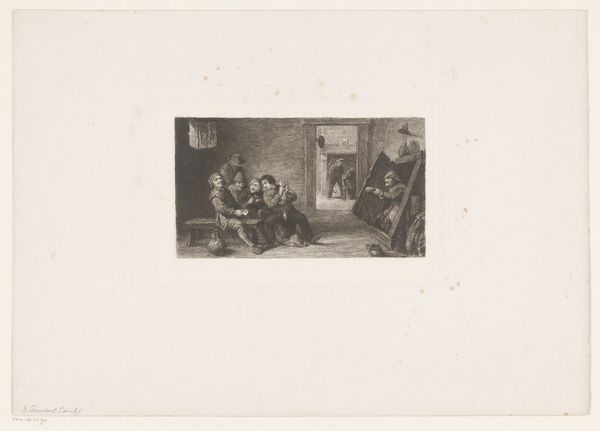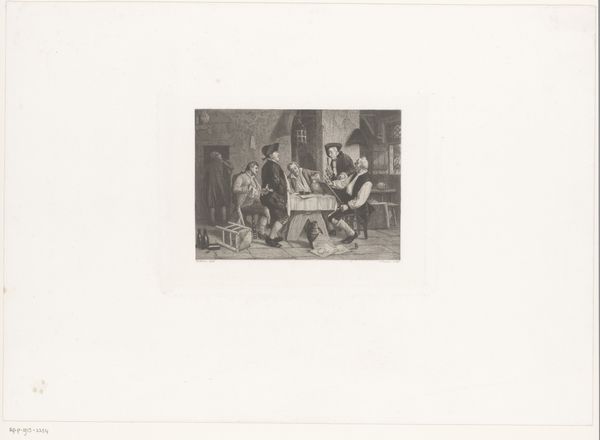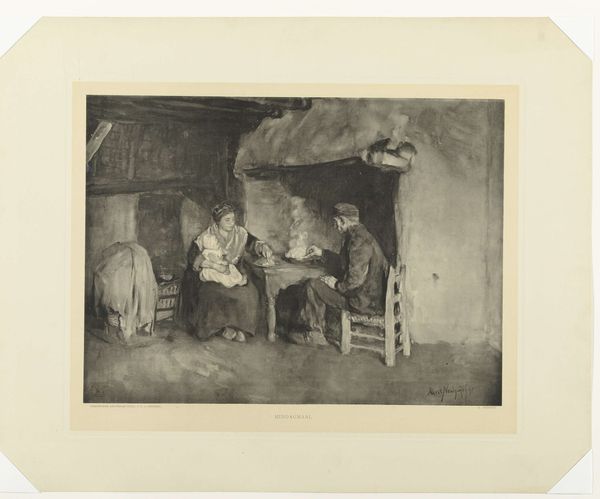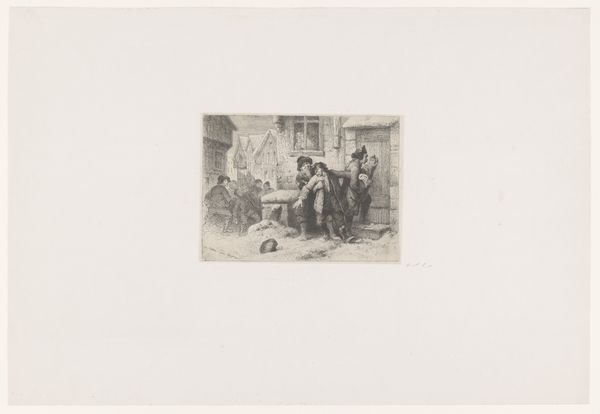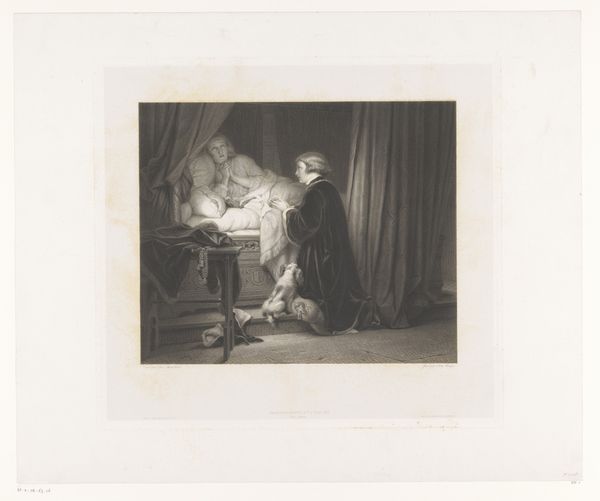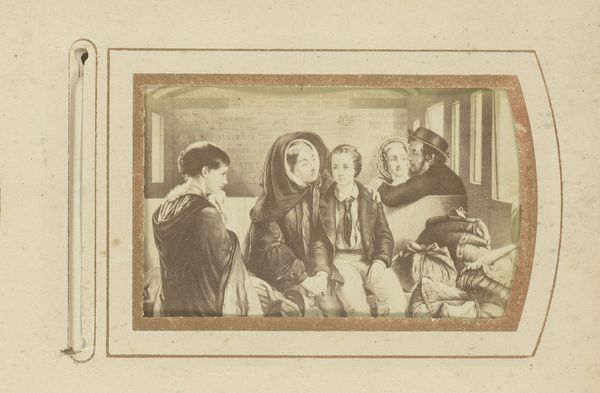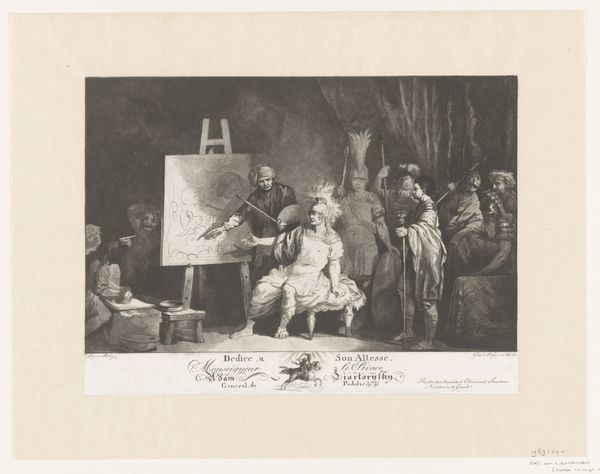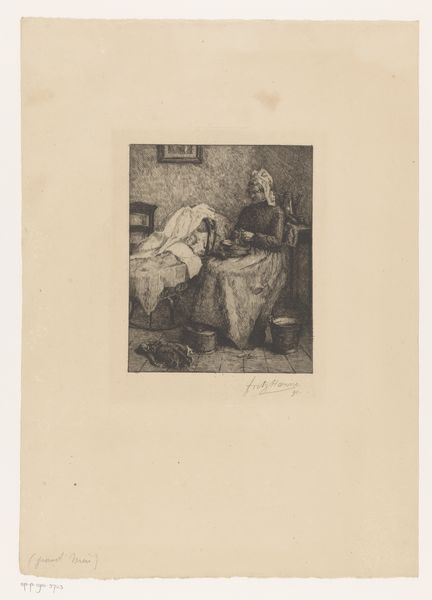
print, engraving
#
portrait
# print
#
group-portraits
#
romanticism
#
history-painting
#
engraving
Dimensions: height 301 mm, width 435 mm
Copyright: Rijks Museum: Open Domain
Editor: This is “Portrait of Sir Francis Baring, with his Brother and his Son-in-Law,” created in 1841, using the engraving medium. It’s a print, a grouping of men formally posed, almost staged. It feels very proper, very… establishment. What’s your take on it? Curator: Establishment is spot on. It evokes that whole era—the serious business of empire building, you know? It’s like peering into a boardroom where decisions shaped the world. The figures seem almost…caricatures of power. What does it suggest to you? It could easily become the banner of a company or bank today! Editor: I see that, almost an advertisement! I hadn't considered that perspective. Do you think there is any emotion represented in their body language or just that they are more interested in portraying the image of aristocracy? Curator: Their expressions, if you could call them that! Blank, except for a flash of calculation, perhaps. The artist's focus, perhaps intentionally, seems less on individual personalities and more on embodying a class, an ideal, a...duty. What sort of "duty", I couldn't say! A kind of gilded cage if you ask me. Editor: That's insightful. Now I'm seeing it less as a family portrait and more as a calculated display of status, though the artist may have wished to do something entirely different. Curator: Perhaps both? Artists often act like magpies, snatching glittering moments of meaning and flying with them. So many histories whispering in the image—the personal intertwined with the historical, always. This has changed my reading quite a bit. Editor: It's funny how one piece can contain so much, depending on how you look at it. Thank you, I really appreciate it.
Comments
rijksmuseum almost 2 years ago
⋮
In 1807 Thomas Lawrence immortalized the fabulously wealthy, influential banker Sir Francis Baring, his older brother John, and his son-in-law Charles Wall. Sir Francis had been partly deaf since childhood and had no objection to being portrayed as such. Evidently the painting was still so popular in 1841 that it was worth-while reproducing it in print.
Join the conversation
Join millions of artists and users on Artera today and experience the ultimate creative platform.
